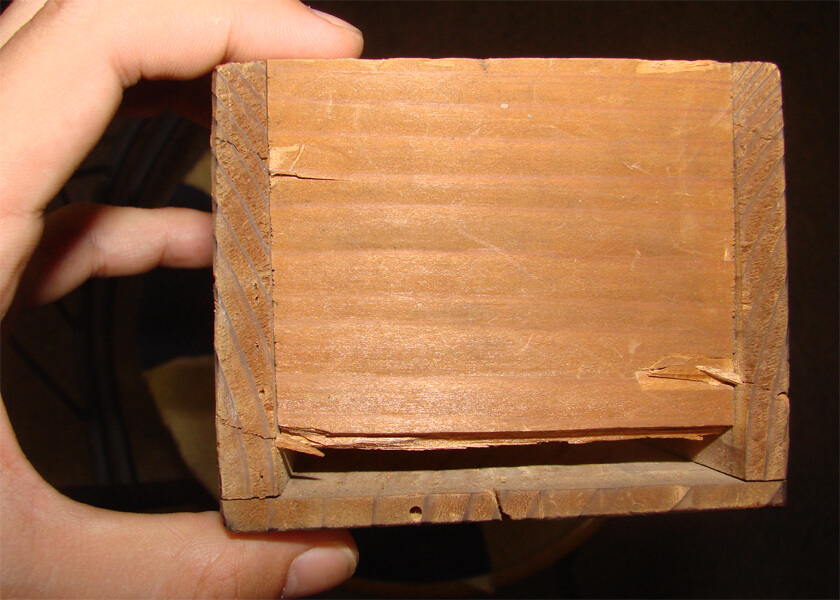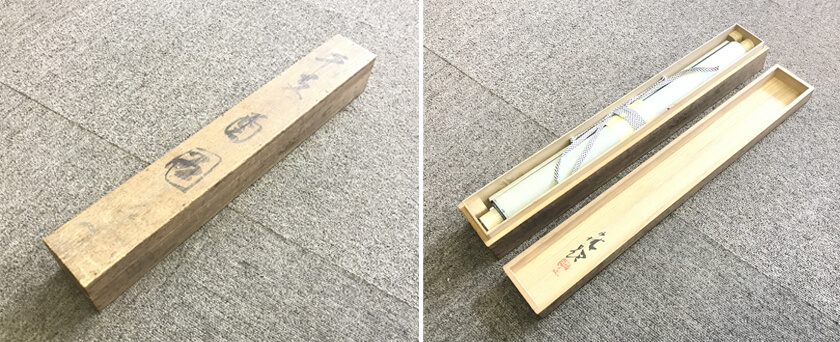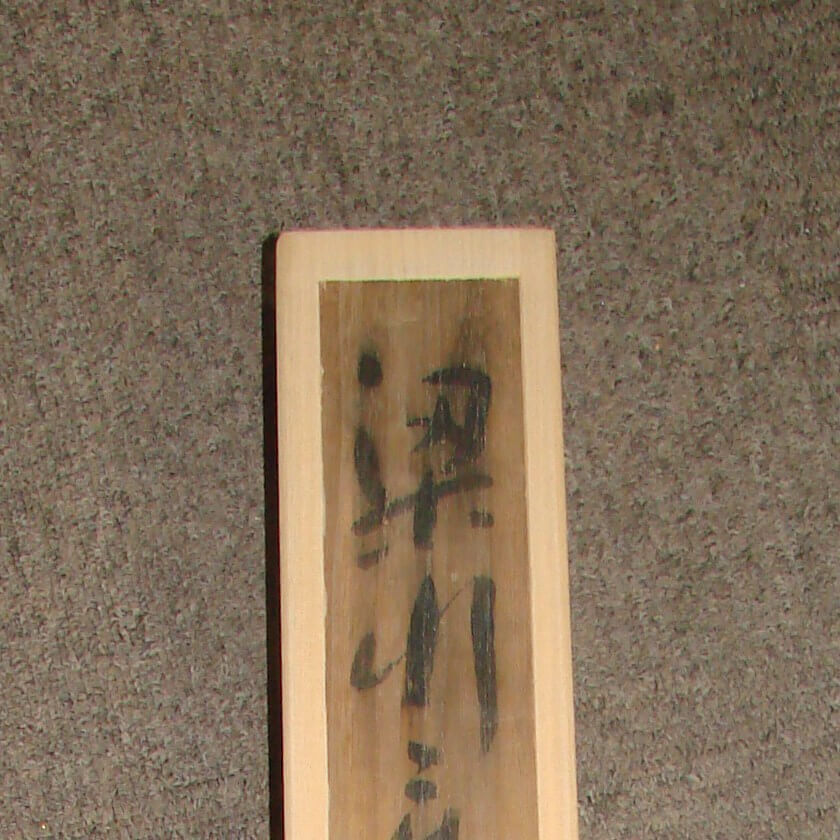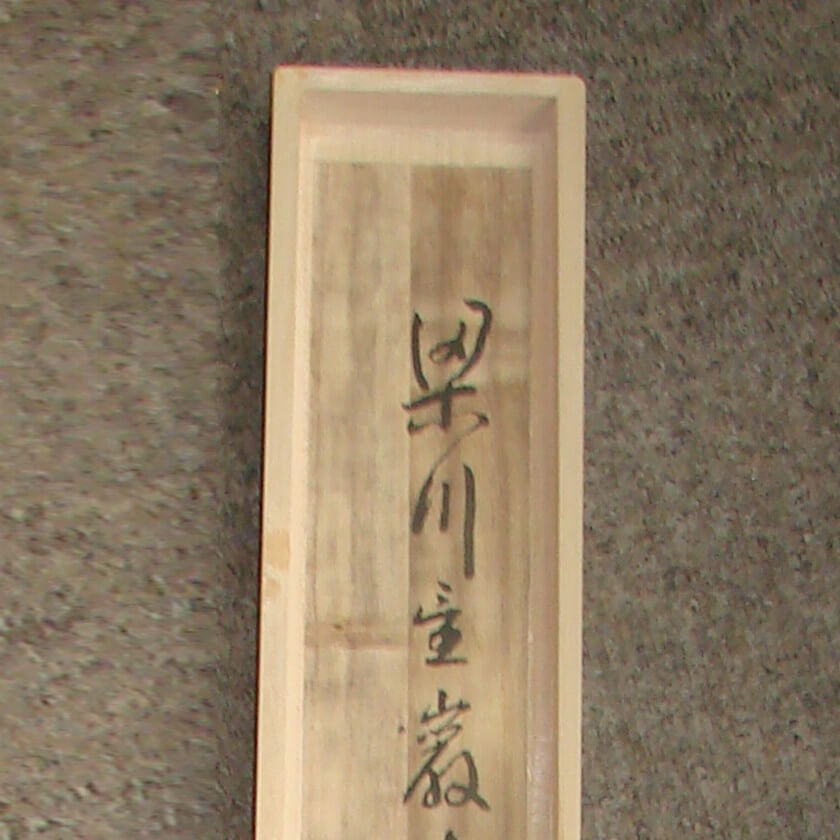Reuse of Old Paulownia Box

Today’s topic is about reuse of old paulownia box.
Sometimes, we happen to receive hanging scrolls(kakejiku) from our clients in heavily damaged paulownia boxes. For example, the boxes being very old, have cracks, being chipped or torn apart. They leave us their kakejiku for repairing or remounting and there are actually many people not knowing what to do with this troublesome box.
Nevertheless, people would like to keep it instead of buying a new one.
You know why?
Hakogaki

Every lid of paulownia box has some words on it which serve as a clue for understanding a kakejiku inside the box and these words are called “hakogaki”.
Followings are some examples of “hakogaki” words & phrases :
+ Painter or calligrapher’s authentic signature
+ Information about the painter by a third party
+ Where and when the main work was created
+ Title of the work
This is the reason people want to keep their paulownia box even though they are heavily damaged.
Reuse of Old Paulownia Box
Now we have good news !!
It is able to cut the written parts on the lid out of old paulownia box and then combine the cut part into a new lid. This technique is not well known but what a master craftsmanship of paulownia box manufacturers! Please see below picture for your reference.


In more detail. You can clearly distinguish between the two colours, old and new.

Now recovered the original function of paulownia box (*1) with keeping the “hakogaki” part perfectly.
*1 : Paulownia box is used to protect kakejiku from being damaged. It has natural insect repellent effects and also serves as a moisture absorber so that kakejiku can be stored in good condition. Dark-coloured part of old box is the evidence of absorbing too much moisture over many years.

If you have questions about refreshing your precious paulownia box, please feel free to contact us.

